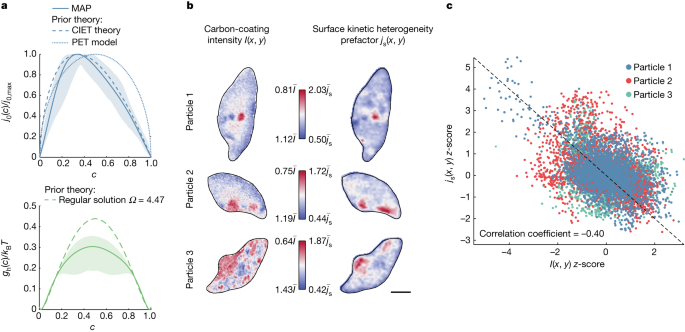MIT News September 13, 2023
Reaction rates at spatially heterogeneous, unstable interfaces are difficult to quantify, yet they are essential in engineering many chemical systems, such as batteries and electrocatalysts. Experimental characterizations of such materials by operando microscopy produce rich image datasets, but data-driven methods to learn physics from these images are lacking because of the complex coupling of reaction kinetics, surface chemistry and phase separation. A team of researchers in the US (MIT, Stanford University, industry, SLAC National Accelerator Laboratory) showed that heterogeneous reaction kinetics can be learned from in situ scanning transmission X-ray microscopy (STXM) images of carbon-coated lithium iron phosphate (LFP) nanoparticles. Combining a large dataset of STXM images with a thermodynamically consistent electrochemical phase-field model they extracted the free-energy landscape and reaction kinetics and verified their consistency with theoretical models. They learned the spatial heterogeneity of the reaction rate, which closely matched the carbon-coating thickness profiles. Across180,000 image pixels, the mean discrepancy with the learned model was small (<7%) and comparable with experimental noise. According to the researchers their results open the possibility of learning nonequilibrium material properties beyond the reach of traditional experimental methods and offer a new non-destructive technique for characterizing and optimizing heterogeneous reactive surfaces… read more. Open Access TECHNICAL ARTICLE

Validation of the learned physics. Credit: Nature volume 621, pages289–294 (2023)